California Kindergarten Science Standards
K-LS1: Molecules to Organisms
Use observations to describe patterns of what plants and animals (including humans) need to survive. Examples of patterns could include that animals need to take in food but plants do not; the different kinds of food needed by different types of animals; the requirement of plants to have light; and, that all living things need water.
KiwiCo Crate: Window Garden
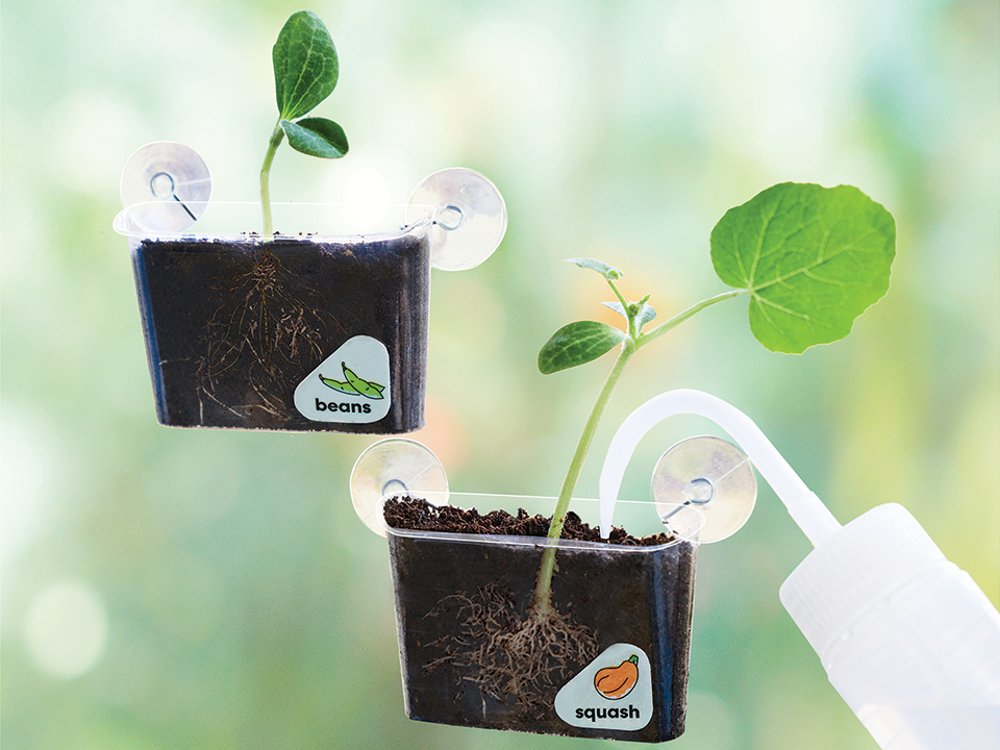
With a Window Garden KiwiCo crate, students will learn about plant science in a hands-on way, in alignment with the K-LS1 California science standard. They will assemble their own suction-cup window planters and grow a set of green bean and squash plants.
K-PS2-1 Motion and Stability: Forces and Interactions
Plan and conduct an investigation to compare the effects of different strengths or different directions of pushes and pulls on the motion of an object.
KiwiCo Crate: Pinball Machine
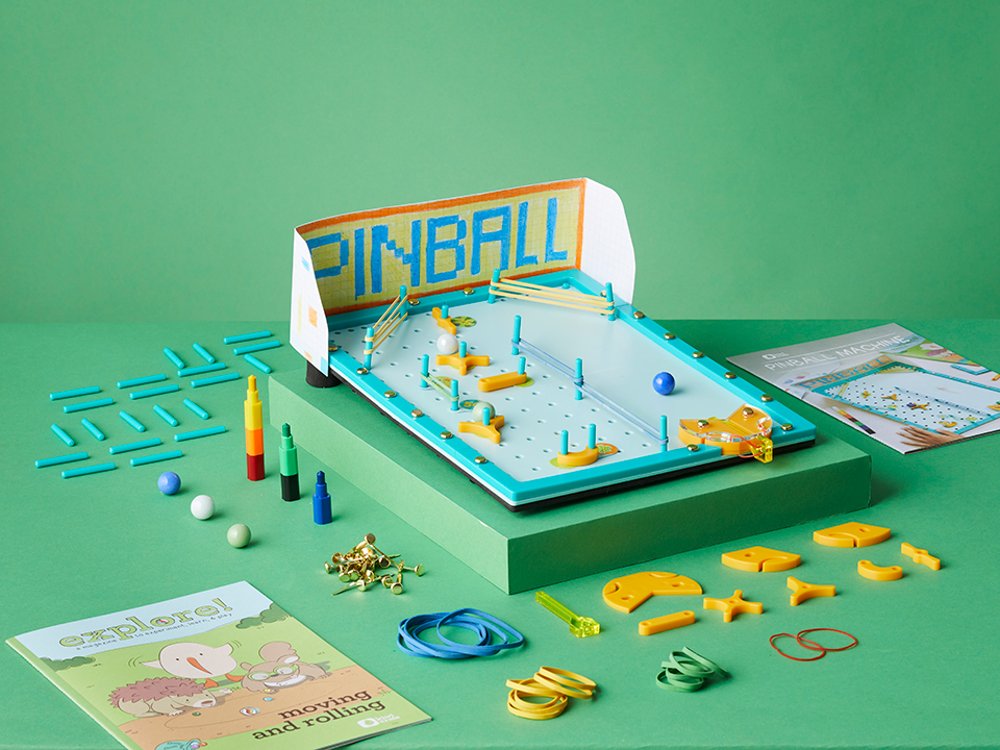
With a Pinball Machine KiwiCo crate, students will learn about objects in motion in alignment with the K-PS2-1 California science standard. They will build their own pinball board and play with angles and momentum.
K-PS2-2 Motion and Stability: Forces and Interactions
Analyze data to determine if a design solution works as intended to change the speed or direction of an object with a push or a pull.
KiwiCo Crate: Marble Timer

With a Marble Timer KiwiCo crate, students will learn about the impact of pushing and pulling in alignment with the K-PS2-2 California science standard. They will build their own marble run and design new paths to help the marbles run faster, slower, and everything in between.
K-ESS2-1 Earth's Systems
Use and share observations of local weather conditions to describe patterns over time.
KiwiCo Crate: Wind
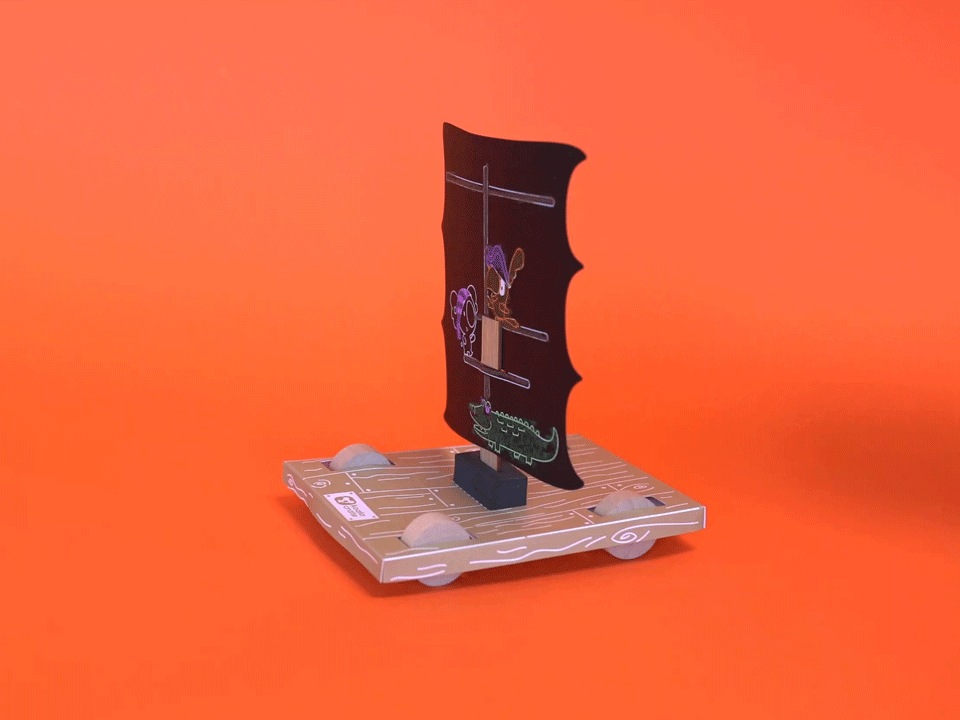
With a Wind KiwiCo crate, students will learn how to describe windy weather, in alignment with the K-ESS2-1 California science standard. They will create a friendly windsock to help discover how the wind moves, and learn about the wind with their own weather chart.
K-ESS2-2 Earth's Systems
Construct an argument supported by evidence for how plants and animals (including humans) can change the environment to meet their needs.
KiwiCo Crate: Water Wheel

With a Water Wheel KiwiCo crate, students will learn how humans use hydropower to generate energy, in alignment with the K-ESS2-2 California science standard.
K-ESS3-1 Earth and Human Activity
Use a model to represent the relationship between the needs of different plants and animals (including humans) and the places they live.
KiwiCo Crate: Flying Squirrel
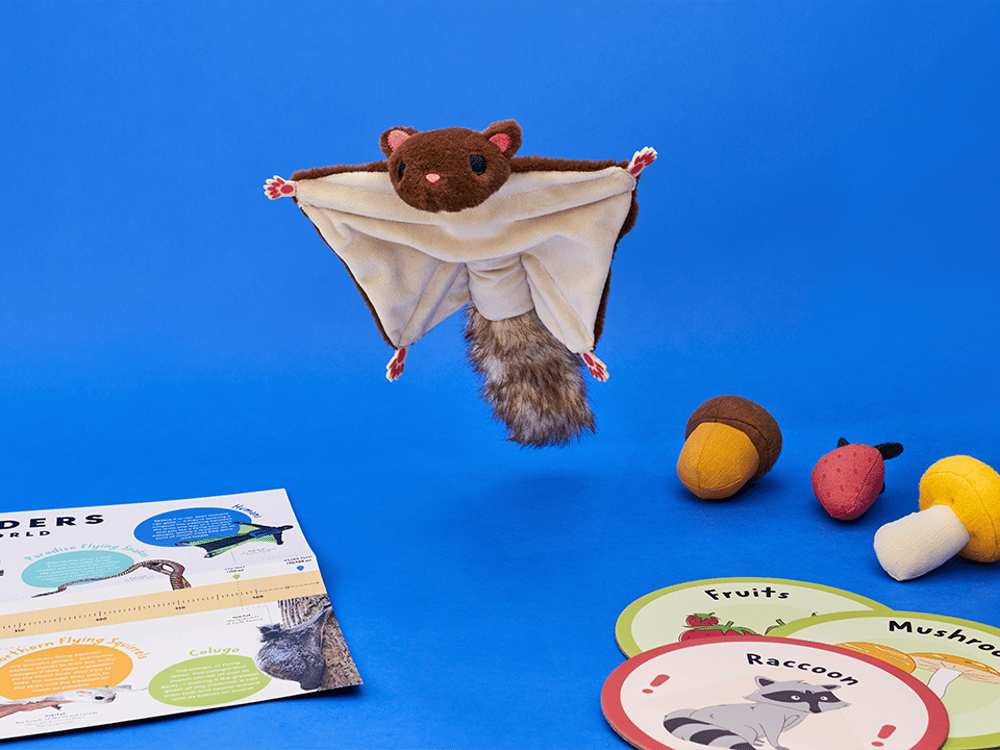
With a Flying Squirrel KiwiCo crate, students will learn how flying squirrels adapted to their surroundings, in alignment with the K-ESS3-1 California science standard. Students will learn about why flying squirrels glide and play a target game where they try to aim their squirrel at delicious food cards, all while evading the perilous predator cards.
K-ESS3-2 Earth and Human Activity
Ask questions to obtain information about the purpose of weather forecasting to prepare for, and respond to, severe weather.
KiwiCo Crate: Wind
With a Wind crate, students will learn about extreme wind conditions, in alignment with the K-ESS2-1 California science standard.
K-ESS3-3 Earth and Human Activity
Communicate solutions that will reduce the impact of humans on the land, water, air, and/or other living things in the local environment.
KiwiCo Crate: Environmental Science: Oil Cleanup
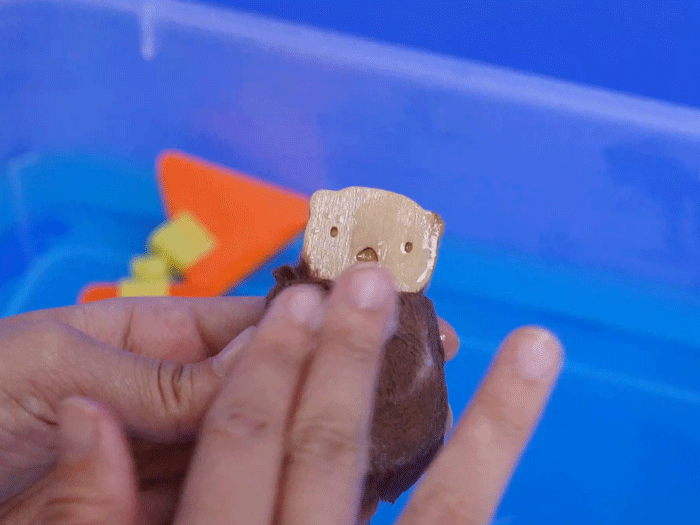
With an Environmental Science: Oil Cleanup KiwiCo crate, students will learn about the Earth and human activity in alignment with the K-ESS3-3 California science standard. They will learn how oil affects oceans and the critters that live in them, and explore different ways to clean up spilled oil — from scooping it up to trapping it in a floating boom.
K-2-ETS1-1 Engineering Design
Ask questions, make observations, and gather information about a situation people want to change to define a simple problem that can be solved through the development of a new or improved object or tool.
KiwiCo Crate: Race Day

With a Race Day KiwiCo crate, students will learn about making observations and improving objects, in accordance with the K-PS2-1 California science standard. They will build their own race days powered by balloons, then race their balloon cars. They’ll then observe the effects of tinkering with the wheels and balloon to improve the car’s speed.
K-2-ETS1-2 Engineering Design
Develop a simple sketch, drawing, or physical model to illustrate how the shape of an object helps it function as needed to solve a given problem.
K-2-ETS1-3 Engineering Design
Analyze data from tests of two objects designed to solve the same problem to compare the strengths and weaknesses of how each performs.
KiwiCo Crate: Race Day
Through a Race Day crate, students will make changes to the shape and structure of their balloon cars in order to test which design performs better.
K-PS3 Energy
Make observations to determine the effect of sunlight on Earth’s surface.
KiwiCo Crate: Solar Crayon Recycler
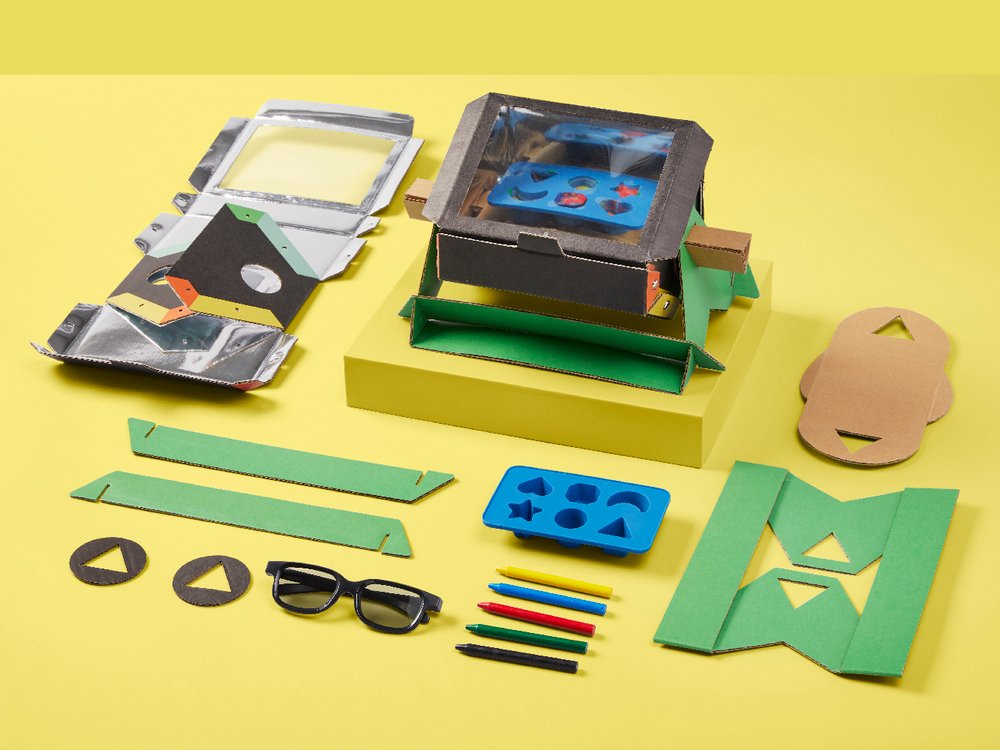
With a Solar Crayon Recycler KiwiCo crate, students will learn about the power of the sun, in accordance with the K-PS3 Energy California science standard. They will discover different ways to capture and use the Sun’s heat, and learn all about the eco-friendly use of solar energy.
California 1st Grade Science Standards
1-ESS1-1 Earth’s Place in the Universe
Use observations of the sun, moon, and stars to describe patterns that can be predicted.
KiwiCo Crate: Astronaut Starter Kit
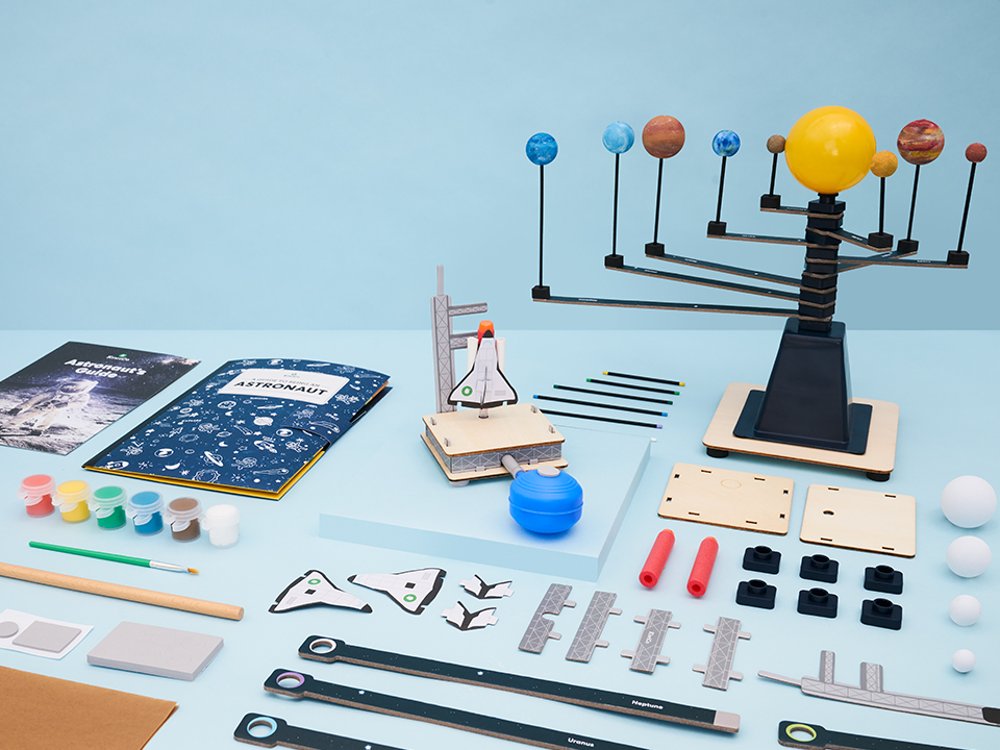
Build a solar system mobile to explore how planets orbit the Sun in a predictable pattern.
1-ESS1-2 Earth's Place in the Universe
Make observations at different times of year to relate the amount of daylight to the time of year.
KiwiCo Crate: Astronaut Starter Kit
Paint a set of model planets, then construct a miniature solar system that really spins.
1-PS4-1 Waves and Their Applications in Technologies for Information Transfer
Plan and conduct investigations to provide evidence that vibrating materials can make sound and that sound can make materials vibrate.
KiwiCo Crate: Wind Chimes

With a KiwiCo Wind Chimes crate, students will construct a set of chimes, then explore the science of pitch by tapping on the different-sized chimes with a striker.
1-LS1-1 From Molecules to Organisms: Structures and Processes
Use materials to design a solution to a human problem by mimicking how plants and/or animals use their external parts to help them survive, grow, and meet their needs.
KiwiCo Crate: Mechanical Sweeper
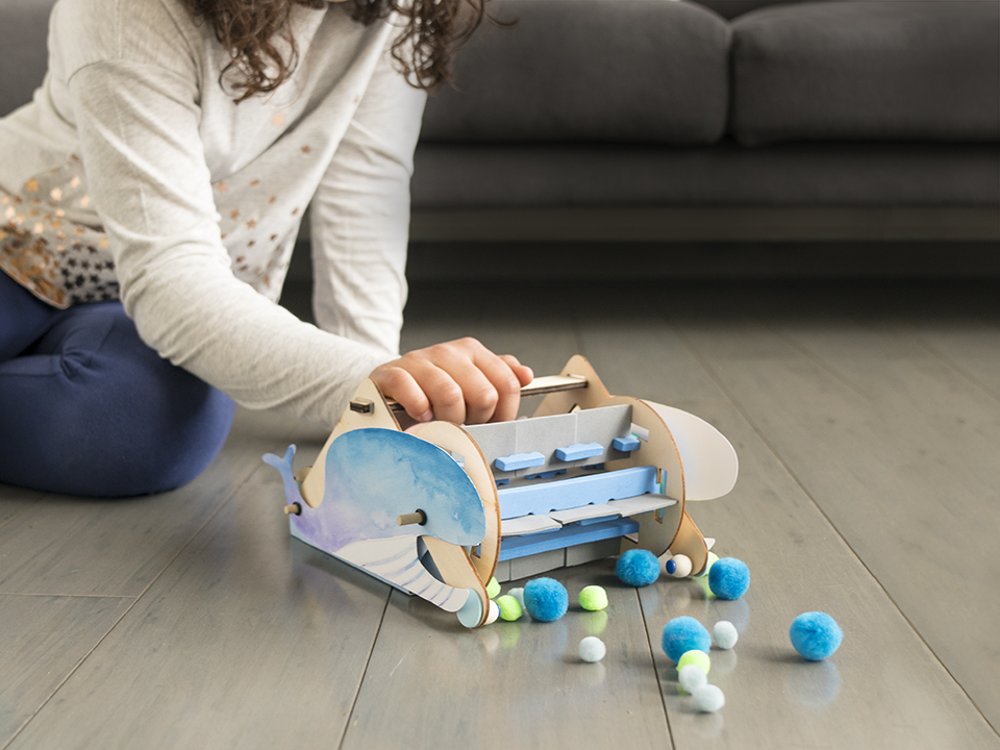
Build a whale-inspired device that picks up small objects. Just as some whales have baleen (broom-like plates) to catch food, the mechanical sweeper has tabs that catch a pom-pom and sweep it up.
1-LS1-2 From Molecules to Organisms: Structures and Processes
Read texts and use media to determine patterns in behavior of parents and offspring that help offspring survive.
1-LS3-1 Heredity: Inheritance and Variation of Traits
Make observations to construct an evidence-based account that young plants and animals are like, but not exactly like, their parents.
California 2nd Grade Science Standards
2-LS4-1 Biological Evolution: Unity and Diversity
Make observations of plants and animals to compare the diversity of life in different habitats.
KiwiCo Crate: Veterinarian Starter Kit
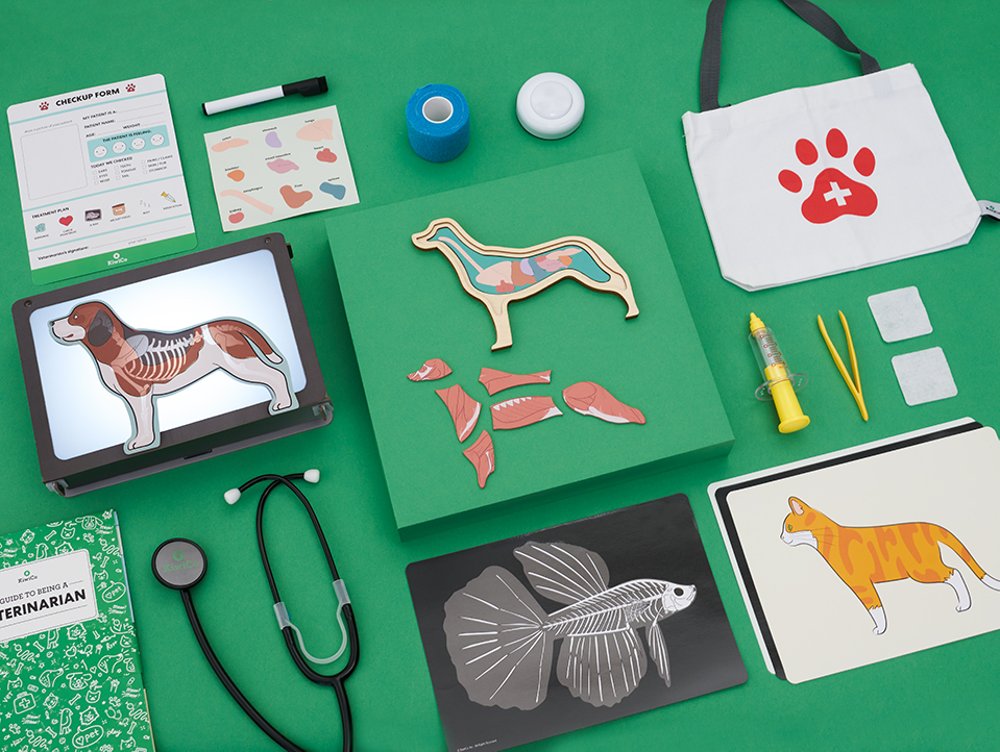
Build an X-ray lightbox to explore animal anatomy. Compare and contrast animal systems to human systems.
2-PS1-1 Matter and Its Interactions
Plan and conduct an investigation to describe and classify different kinds of materials by their observable properties.
2-PS1-2 Matter and Its Interactions
Analyze data obtained from testing different materials to determine which materials have the properties that are best suited for an intended purpose.
2-PS1-3 Matter and Its Interactions
Make observations to construct an evidence-based account of how an object made of a small set of pieces can be disassembled and made into a new object.
2-PS1-4 Matter and Its Interactions
Construct an argument with evidence that some changes caused by heating or cooling can be reversed and some cannot.
2-LS2-1 Ecosystems: Interactions, Energy, and Dynamics
Plan and conduct an investigation to determine if plants need sunlight and water to grow.
KiwiCo Crate: Window Garden
Students will grow plants using sunlight and water, and learn about ecosystems in a hands-on way.
2-LS2-2 Ecosystems: Interactions, Energy, and Dynamics
Develop a simple model that mimics the function of an animal in dispersing seeds or pollinating plants.
2-ESS1-1 Earth's Place in the Universe
Use information from several sources to provide evidence that Earth events can occur quickly or slowly.
2-ESS2-1 Earth's Systems
Compare multiple solutions designed to slow or prevent wind or water from changing the shape of the land.
2-ESS2-2 Earth's Systems
Develop a model to represent the shapes and kinds of land and bodies of water in an area.
California 3rd Grade Science Standards
3-PS2-1 Motion and Stability: Forces and Interactions
Plan and conduct an investigation to provide evidence of the effects of balanced and unbalanced forces on the motion of an object.
KiwiCo Crate: Bottle Rocket
Mix up a chemical reaction to launch a rocket. The rocket remains on the launcher until an unbalanced force is exerted. When pressure inside the rocket becomes too great, it pushes the rocket off the launcher and into the air.
3-PS2-2 Motion and Stability: Forces and Interactions
Make observations and/or measurements of an object’s motion to provide evidence that a pattern can be used to predict future motion.
KiwiCo Crate: Bottle Rocket
Record the height of the bottle rocket’s journey. Estimate the height of future rockets based on the amount of fuel used.
3-PS2-3 Motion and Stability: Forces and Interactions
Ask questions to determine cause and effect relationships of electric or magnetic interactions between two objects not in contact with each other.
KiwiCo Crate: Magnetic Motion
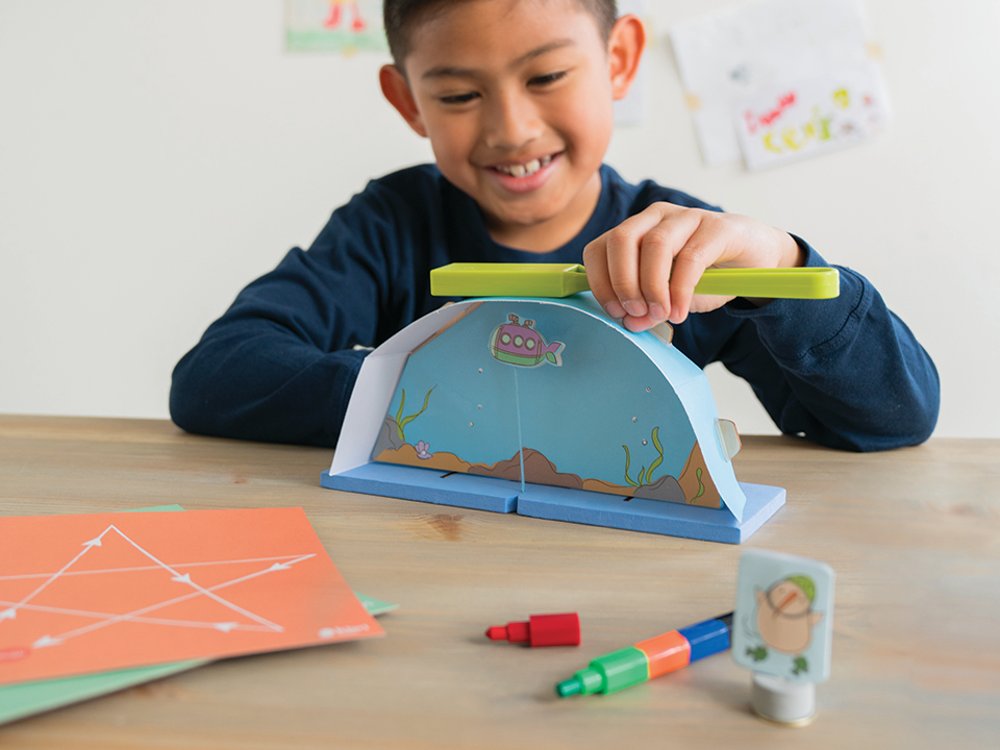
Students will learn all about magnetic force with the Magnetic Motion crate! They will build a theater that uses magnet power to lift paper vehicles into the air. Then they will design their own magnet game challenges!
3-PS2-4 Motion and Stability: Forces and Interactions
Define a simple design problem that can be solved by applying scientific ideas about magnets.
KiwiCo Crate: Magnetic Motion
Students will use a magnet to move a character through a maze, and design their own magnet challenges.
3-LS1-1 From molecules to Organisms: Structures and Processes
Develop models to describe that organisms have unique and diverse life cycles but all have in common birth, growth, reproduction, and death.
KiwiCo Crate: Veterinarian Starter Kit
Students will learn about animal anatomy and how animals grow.
3-5-ETS1-1 Engineering Design
Define a simple design problem reflecting a need or a want that includes specified criteria for success and constraints on materials, time, or cost.
KiwiCo Crate: Pulley Crane
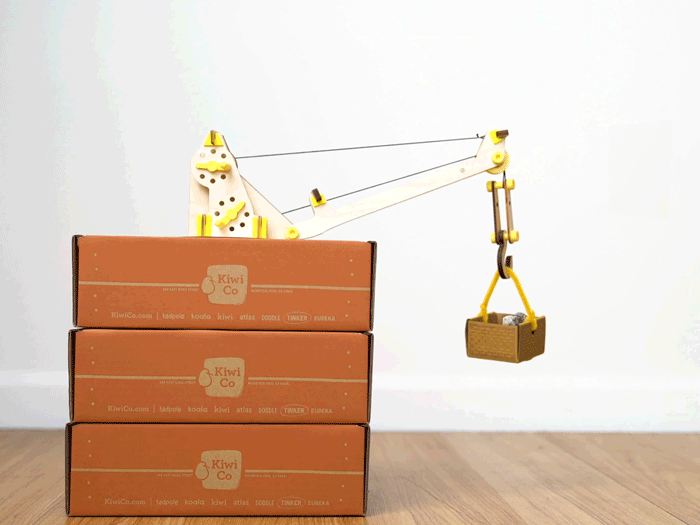
Modify the pulley to lift different weights with the least amount of work.
3-5-ETS1-2 Engineering Design
Generate and compare multiple possible solutions to a problem based on how well each is likely to meet the criteria and constraints of the problem.
KiwiCo Crate: Pulley Crane
Experiment with fixed and compound pulleys to lift the heaviest possible weight.
3-5-ETS1-3 Engineering Design
Plan and carry out fair tests in which variables are controlled and failure points are considered to identify aspects of a model or prototype that can be improved.
KiwiCo Crate: Bottle Rocket
Test the rocket and modify as needed to help it fly higher. Adjust the fins to change how the rocket flies.
3-LS2-1 Ecosystems: Interactions, Energy, and Dynamics
Construct an argument that some animals form groups that help members survive.
3-LS3-1 Heredity: Inheritance and Variation of Traits
Analyze and interpret data to provide evidence that plants and animals have traits inherited from parents and that variation of these traits exists in a group of similar organisms.
3-LS3-2 Heredity: Inheritance and Variation of Traits
Use evidence to support the explanation that traits can be influenced by the environment.
3-LS4-1 Biological Evolution: Unity and Diversity
Analyze and interpret data from fossils to provide evidence of the organisms and the environments in which they lived long ago.
KiwiCo Crate: Paleontologist Starter Kit
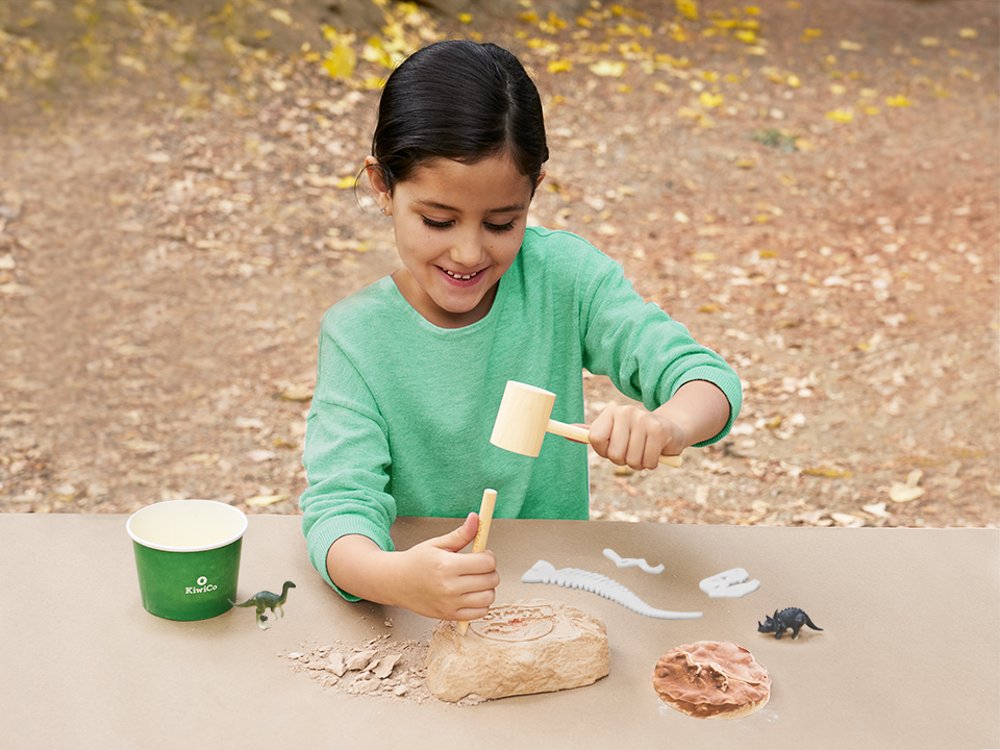
Use tools to excavate bones, then assemble them into a dinosaur skeleton display. Make amazingly detailed fossil impressions with a set of mini dinosaurs, modeling clay, and plaster.
3-LS4-2 Biological Evolution: Unity and Diversity
Use evidence to construct an explanation for how the variations in characteristics among individuals of the same species may provide advantages in surviving, finding mates, and reproducing.
3-LS4-3 Biological Evolution: Unity and Diversity
Construct an argument with evidence that in a particular habitat some organisms can survive well, some survive less well, and some cannot survive at all.
3-LS4-4 Biological Evolution: Unity and Diversity
Make a claim about the merit of a solution to a problem caused when the environment changes and the types of plants and animals that live there may change.
KiwiCo Crate: Paleontologist Starter Kit
Through this crate, students will learn about the environmental changes that led to the evolution of new species.
3-ESS2-1 Earth's Systems
Represent data in tables and graphical displays to describe typical weather conditions expected during a particular season.
3-ESS2-2 Earth's Systems
Obtain and combine information to describe climates in different regions of the world.
3-ESS3-1 Earth and Human Activity
Make a claim about the merit of a design solution that reduces the impacts of a weather-related hazard.
California 4th Grade Science Standards
4-PS3-1 Energy
Use evidence to construct an explanation relating the speed of an object to the energy of that object.
KiwiCo Crate: Spin Art Machine
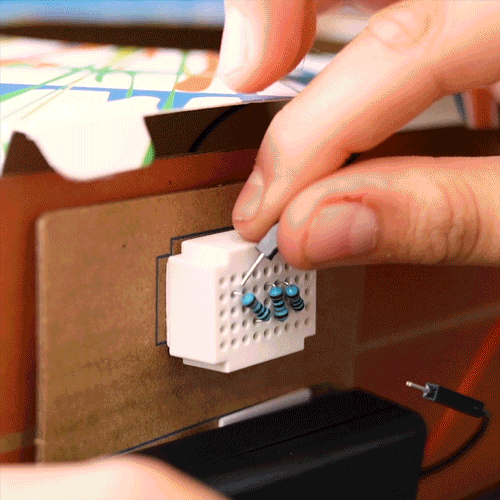
Students will learn about centrifugal force by creating art with a Spin Art Machine.
4-PS3-2 Energy
Make observations to provide evidence that energy can be transferred from place to place by sound, light, heat, and electric currents.
KiwiCo Crate: Spin Art Machine
Students will observe the impacts of friction on the speed of the painting device.
4-PS3-3 Energy
Ask questions and predict outcomes about the changes in energy that occur when objects collide.
KiwiCo Crate: Spin Art Machine
Students will be able to visualize the change in energy when the spinning machine begins to generate friction.
4-PS3-4 Energy
Apply scientific ideas to design, test, and refine a device that converts energy from one form to another.
KiwiCo Crate: Spin Art Machine
Students will observe the transfer of energy from the spinning machine onto paper in a highly visual way.
4-PS4-1 Waves and Their Applications in Technologies for Information Transfer
Develop a model of waves to describe patterns in terms of amplitude and wavelength and that waves can cause objects to move.
4-PS4-2 Waves and Their Applications in Technologies for Information Transfer
Develop a model to describe that light reflecting from objects and entering the eye allows objects to be seen.
4-PS4-3 Waves and Their Applications in Technologies for Information Transfer
Generate and compare multiple solutions that use patterns to transfer information.
4-LS1-1 From Molecules to Organisms: Structures and Processes
Construct an argument that plants and animals have internal and external structures that function to support survival, growth, behavior, and reproduction.
KiwiCo Crate: Remote-Controlled Snake Robot
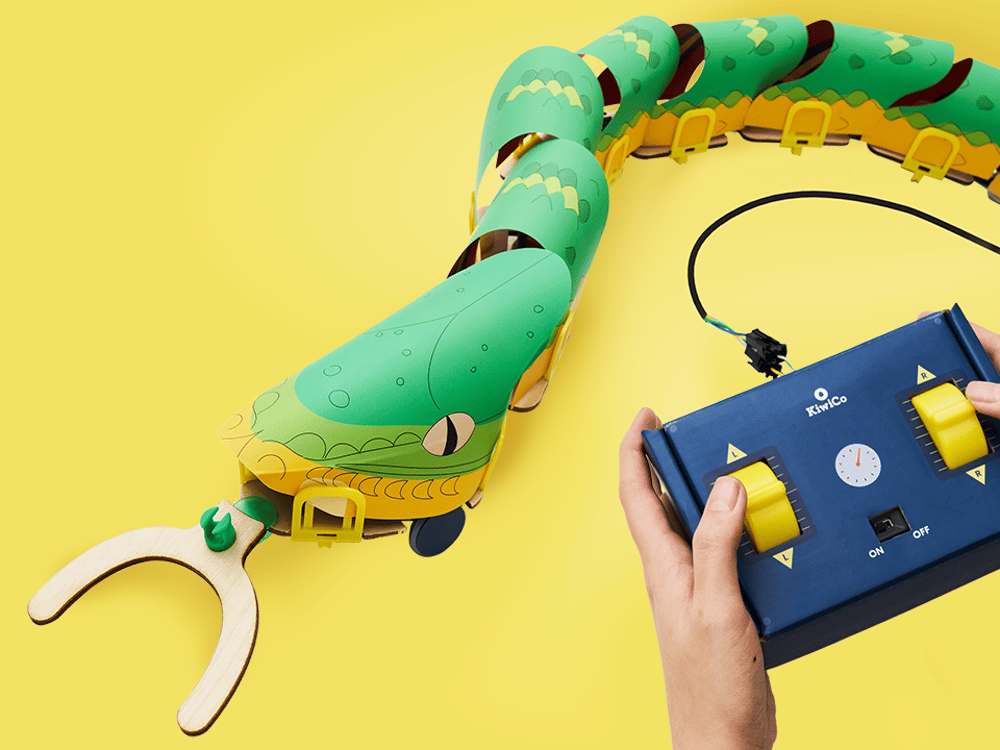
Through this crate, students will construct a snake that replicates real-life slithering, demonstrating a key survival mechanism for snakes.
4-LS1-2 From Molecules to Organisms: Structures and Processes
Use a model to describe that animals receive different types of information through their senses, process the information in their brain, and respond to the information in different ways.
4-ESS1-1 Earth's Place in the Universe
Identify evidence from patterns in rock formations and fossils in rock layers to support an explanation for changes in a landscape over time.
KiwiCo Crate: Paleontologist Starter Kit
Students will dig for fossils and read about the geologic timescale, how fossils are formed, and the on-the-job adventures of a real paleontologist.
4-ESS2-1 Earth's Systems
Make observations and/or measurements to provide evidence of the effects of weathering or the rate of erosion by water, ice, wind, or vegetation.
4-ESS2-2 Earth's Systems
Analyze and interpret data from maps to describe patterns of Earth’s features.
4-ESS3-1 Earth and Human Activity
Obtain and combine information to describe that energy and fuels are derived from natural resources and their uses affect the environment.
KiwiCo Crate: Environmental Science: Oil Cleanup
Students will experience the effects that oil spills cause on the environment.
4-ESS3-2 Earth and Human Activity
Generate and compare multiple solutions to reduce the impacts of natural Earth processes on humans.
KiwiCo Crate: Environmental Science: Oil Cleanup
Students will get hands-on and experiment with different solutions for cleaning up oil spills.
California 5th Grade Science Standards
5-PS1-1 Matter and Its Interactions
Develop a model to describe that matter is made of particles too small to be seen.
5-PS1-2 Matter and Its Interactions
Measure and graph quantities to provide evidence that regardless of the type of change that occurs when heating, cooling, or mixing substances, the total weight of matter is conserved.
5-PS1-3 Matter and Its Interactions
Make observations and measurements to identify materials based on their properties.
KiwiCo Crate: Color Changing Slime
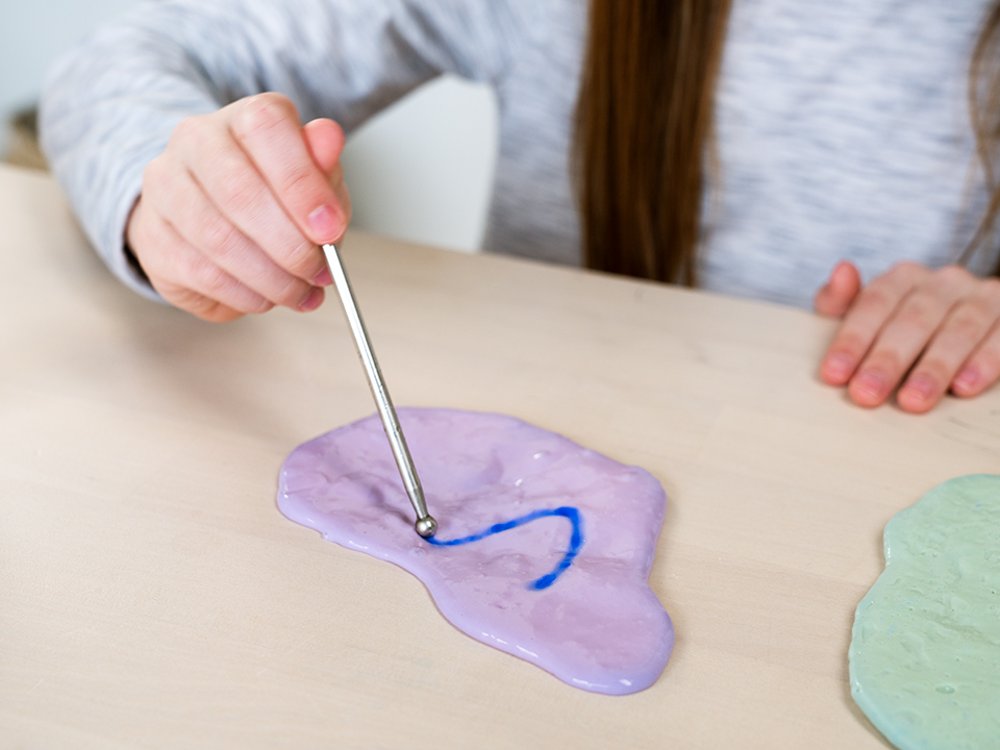
Students will make observations about slime and its properties.
5-PS1-4 Matter and Its Interactions
Conduct an investigation to determine whether the mixing of two or more substances results in new substances.
KiwiCo Crate: Color Changing Slime
Students will explore the science of thermochromism by mixing materials to create color changing slime.
5-PS2-1 Motion and Stability: Forces and Interactions
Support an argument that the gravitational force exerted by Earth on objects is directed down.
KiwiCo Crate: Gravity Game
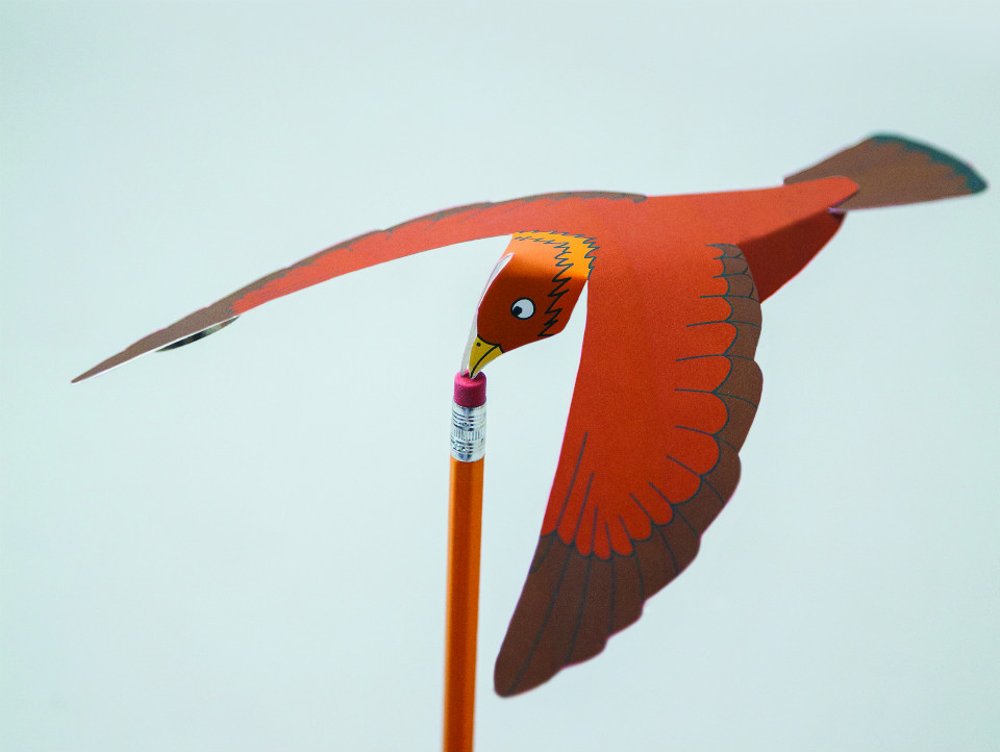
Students will play with gravity and experiment with solving gravity-related problems, such as building a game and trying to make the ball roll uphill.
5-PS3-1 Energy
Use models to describe that energy in animals’ food (used for body repair, growth, motion, and to maintain body warmth) was once energy from the sun.
5-LS1-1 From Molecules to Organisms: Structures and Processes
Support an argument that plants get the materials they need for growth chiefly from air and water.
KiwiCo Crate: Drip Irrigation
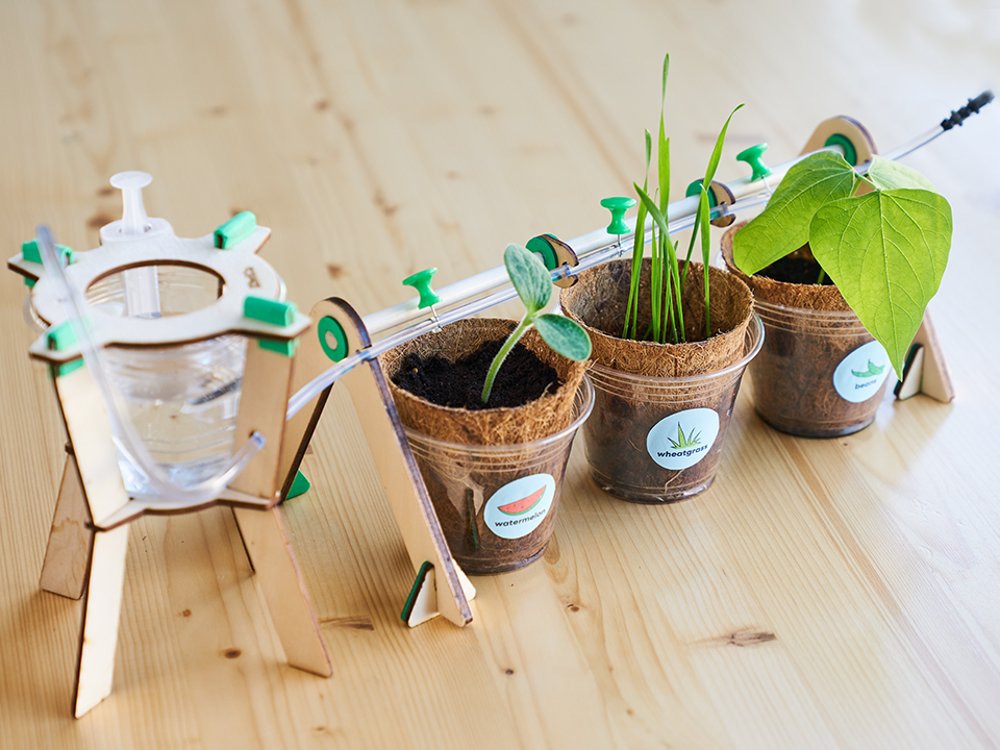
With the Drip Irrigation KiwiCo crate, students will engineer a drip irrigation system and learn about how irrigation systems work in real-life farming.
5-LS2-1 Ecosystems: Interactions, Energy, and Dynamics
Develop a model to describe the movement of matter among plants, animals, decomposers, and the environment.
KiwiCo Crate: Kitchen Scrap Planter
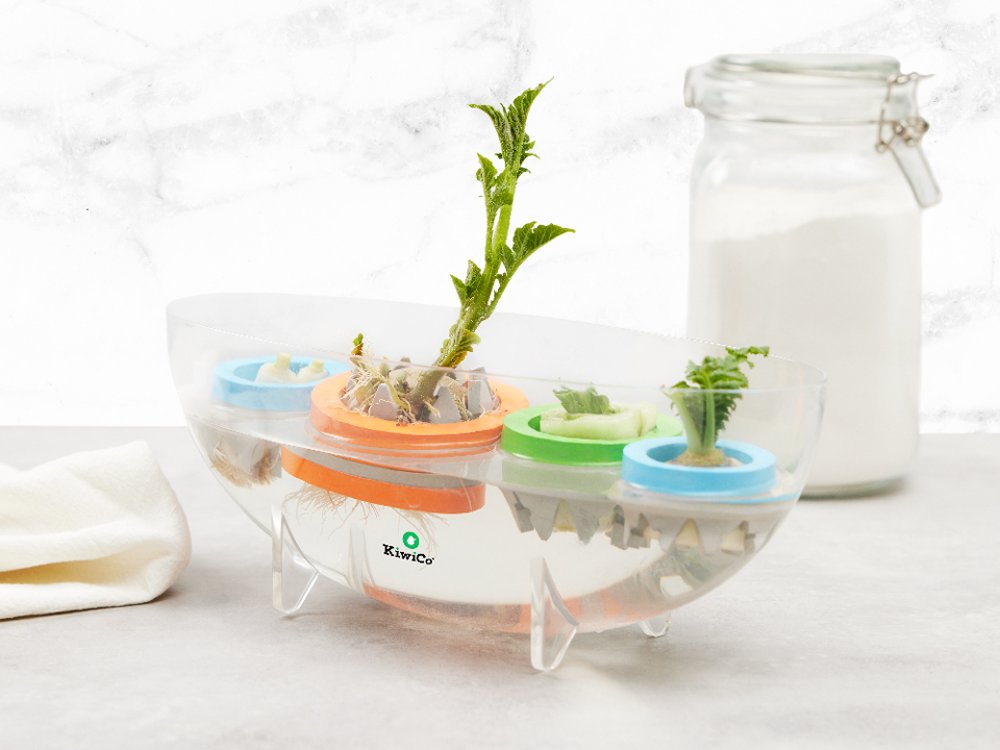
Students will set up a simple system to grow fresh greens and veggies from the leftovers of old food parts, demonstrating the power of decomposition and the movement of matter.
5-ESS1-1 Earth's Place in the Universe
Support an argument that the apparent brightness of the sun and stars is due to their relative distances from the Earth.
KiwiCo Crate: Planetarium
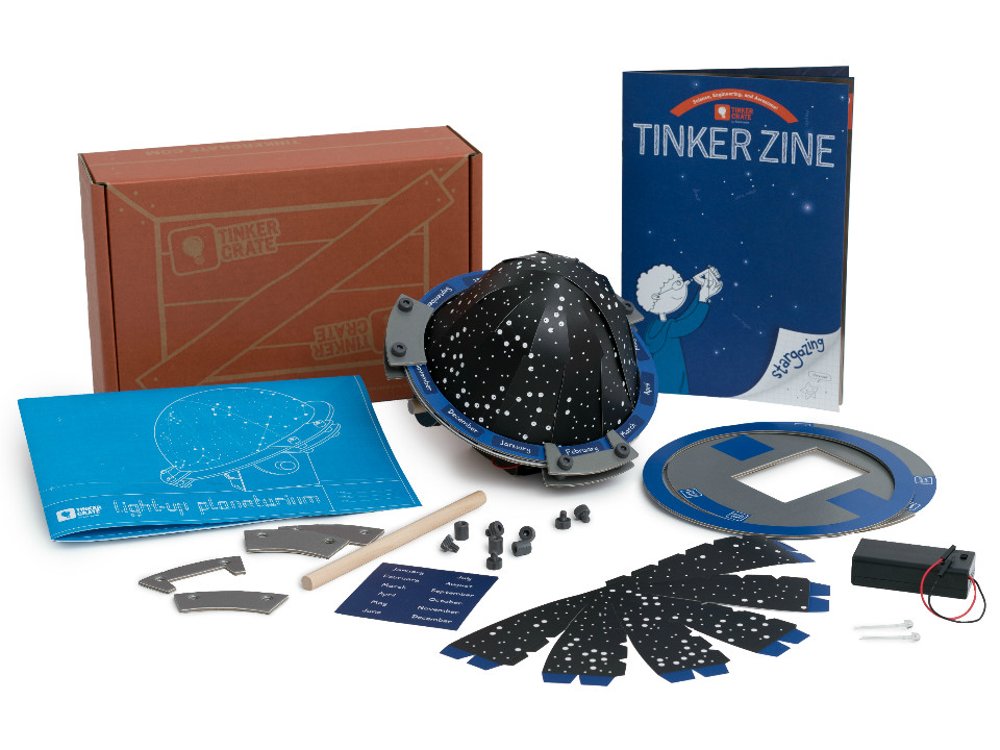
In this planetarium crate, students will wire up a planetarium model and observe how some stars are brighter than others.
5-ESS1-2 Earth's Place in the Universe
Represent data in graphical displays to reveal patterns of daily changes in length and direction of shadows, day and night, and the seasonal appearance of some stars in the night sky.
KiwiCo Crate: Planetarium
In accordance with California Science Standards for 5th grade, students will construct a planetarium to explore the night sky and see how it changes throughout the year.
5-ESS2-1 Earth's Systems
Develop a model using an example to describe ways the geosphere, biosphere, hydrosphere, and/or atmosphere interact.
5-ESS2-2 Earth's Systems
Describe and graph the amounts and percentages of water and fresh water in various reservoirs to provide evidence about the distribution of water on Earth.
5-ESS3-1 Earth and Human Activity
Obtain and combine information about ways individual communities use science ideas to protect the Earth’s resources and environment.
KiwiCo Crate: Environmental Science: Oil Cleanup
Students will explore the scientific processes that communities can use to protect the environment from oil spills.
California Middle School Science Standards (Grades 6-8)
The California science standards for Middle School (Grades 6-8) are the foundation of a student's understanding of how the world works. Students need to know these concepts in order to be prepared for middle school and beyond.
KiwiCo has hand-picked crates that help teach each standard. These crates are perfect for students to better understand tricky concepts and to reinforce learning with hands-on activities.
MS-PS1-1 Matter and its Interactions
Develop models to describe the atomic composition of simple molecules and extended structures.
MS-PS1-2 Matter and its Interactions
Analyze and interpret data on the properties of substances before and after the substances interact to determine if a chemical reaction has occurred.
KiwiCo Crate: Electrochemistry Lab
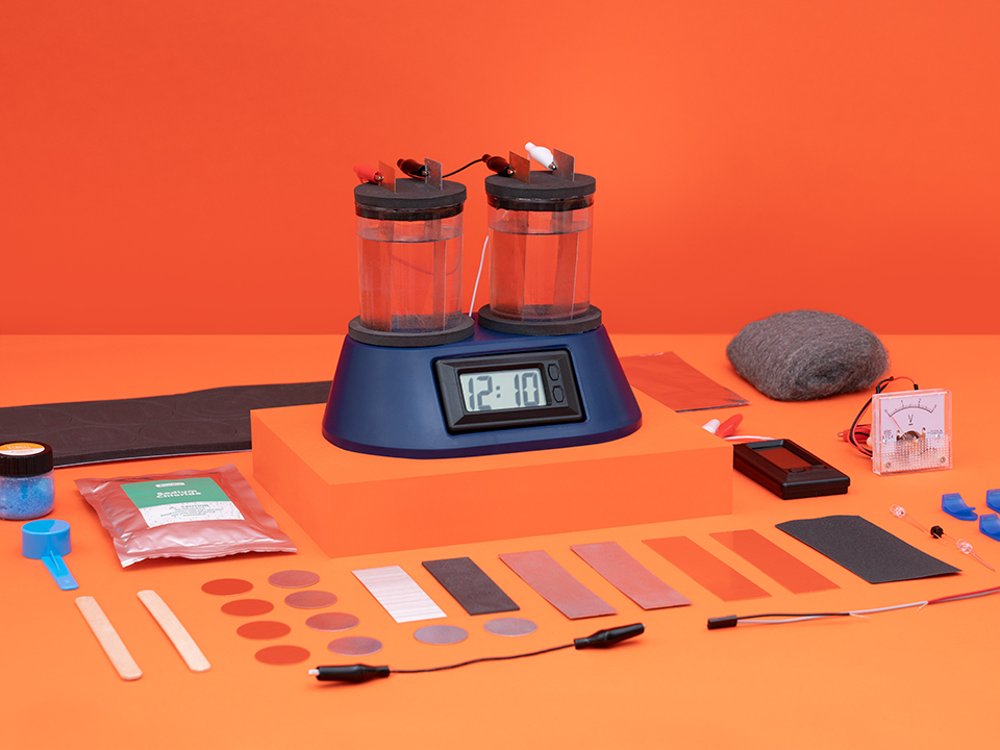
Students will explore the MS-PS1-2 California science standard by producing an oxidation reaction that "eats" up aluminum foil.
MS-PS1-3 Matter and its Interactions
Gather and make sense of information to describe that synthetic materials come from natural resources and impact society.
KiwiCo Crate: Glow Lab
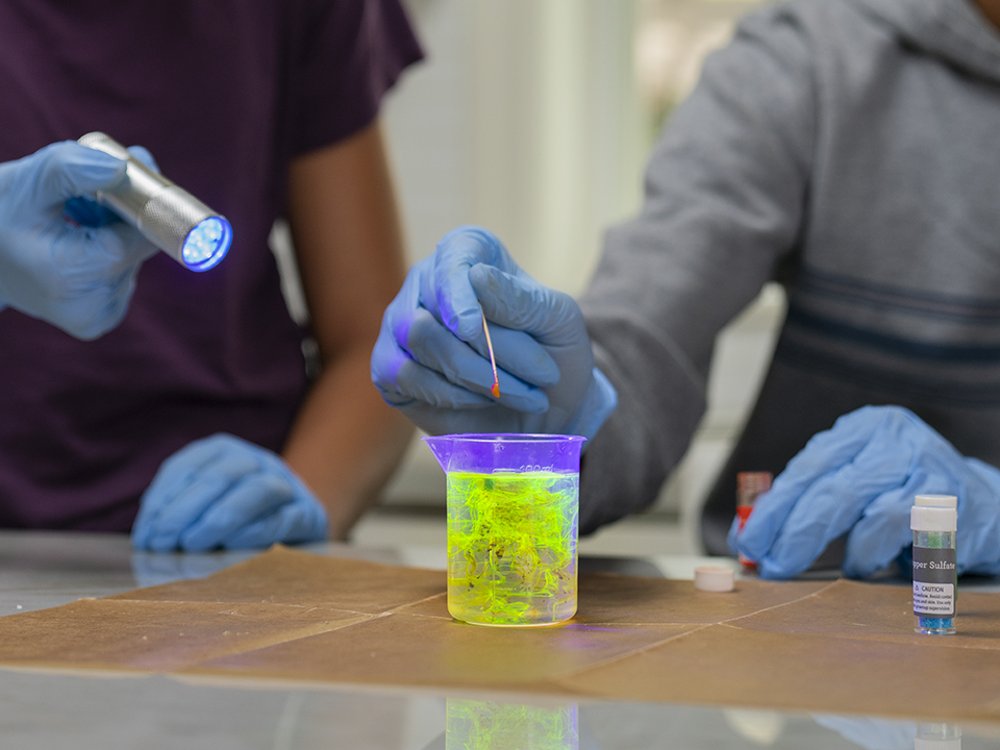
Students will learn how combining naturally occurring materials can result in synthetic glow effects.
MS-PS1-4 Matter and its Interactions
Develop a model that predicts and describes changes in particle motion, temperature, and state of a pure substance when thermal energy is added or removed.
KiwiCo Crate: Color Changing Slime
With the Color Changing Slime crate, students will explore the science of thermochromism — with squishy slime that shifts color when it changes temperature.
MS-PS1-5 Matter and its Interactions
Develop and use a model to describe how the total number of atoms does not change in a chemical reaction and thus mass is conserved.
MS-PS1-6 Matter and its Interactions
Undertake a design project to construct, test, and modify a device that either releases or absorbs thermal energy by chemical processes.
MS-PS2-1 Motion and Stability: Forces and Interactions
Apply Newton’s Third Law to design a solution to a problem involving the motion of two colliding objects.
KiwiCo Crate: Air Hockey
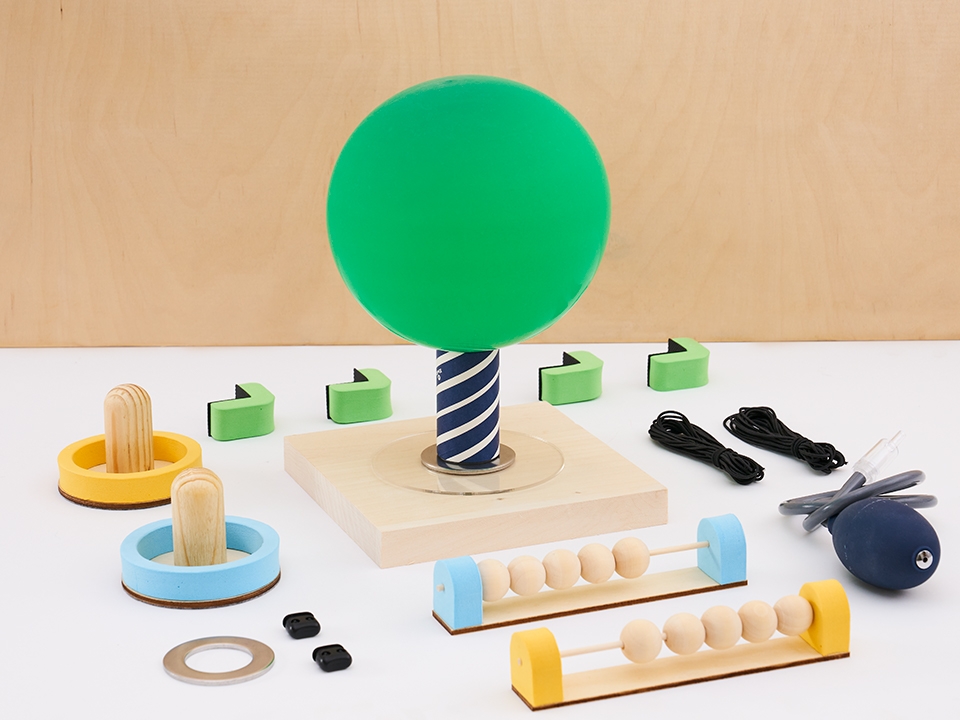
With the Air Hockey crate from KiwiCo, students will explore California science standard MS-PS2-1 through the impact of collisions on a balloon-powered air hockey puck.
MS-PS2-2 Motion and Stability: Forces and Interactions
Plan an investigation to provide evidence that the change in an object’s motion depends on the sum of the forces on the object and the mass of the object.
KiwiCo Crate: Air Hockey
Students can experiment with weight differences on the balloon-powered puck to determine the impact of mass on force.
MS-PS2-3 Motion and Stability: Forces and Interactions
Ask questions about data to determine the factors that affect the strength of electric and magnetic forces.
KiwiCo Crate: Slime Circuits
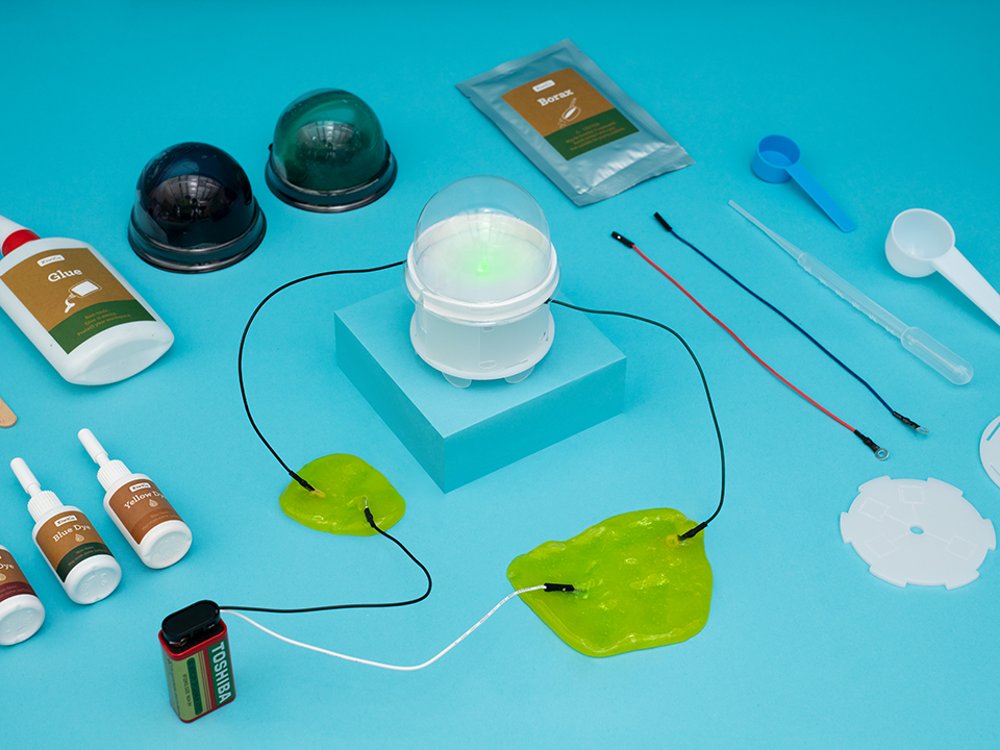
With Slime Circuits, students will explore electrical force factors through a series of electric experiments that showcase the science of switches, resistance, LED color-mixing, and more.
MS-PS2-4 Motion and Stability: Forces and Interactions
Construct and present arguments using evidence to support the claim that gravitational interactions are attractive and depend on the masses of interacting objects.
KiwiCo Crate: Planetarium
Students will build their own planetarium and observe how the gravitational interactions of the Earth and Sun result in a changing night sky.
MS-PS2-5 Motion and Stability: Forces and Interactions
Conduct an investigation and evaluate the experimental design to provide evidence that fields exist between objects exerting forces on each other even though the objects are not in contact.
KiwiCo Crate: Planetarium
Students will observe how the Sun’s gravity impacts Earth’s journey despite the fact that they are not in contact.
MS-PS3-1 Energy
Construct and interpret graphical displays of data to describe the relationships of kinetic energy to the mass of an object and to the speed of an object.
KiwiCo Crate: Make-It-Move Electronics Set
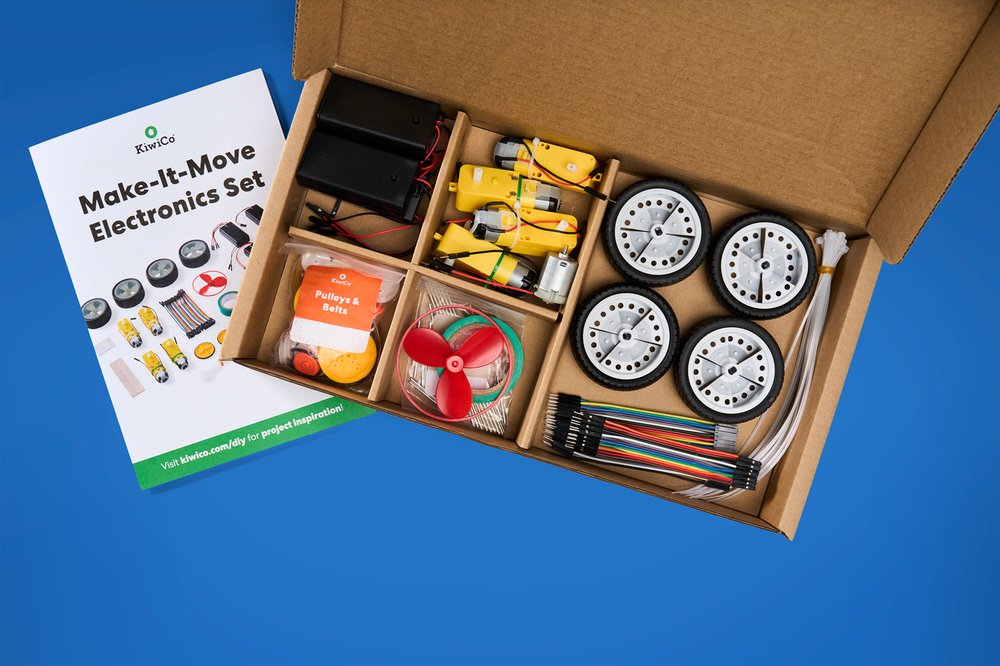
With this electronics kit, students will build their very own motorized mechanical contraptions. In doing so, they will experiment with adding and subtracting mass from their design and measuring how doing so impacts the vehicle’s speed.
MS-PS3-2 Energy
Develop a model to describe that when the arrangement of objects interacting at a distance changes, different amounts of potential energy are stored in the system.
MS-PS3-3 Energy
Apply scientific principles to design, construct, and test a device that either minimizes or maximizes thermal energy transfer.
MS-PS3-4 Energy
Plan an investigation to determine the relationships among the energy transferred, the type of matter, the mass, and the change in the average kinetic energy of the particles as measured by the temperature of the sample.
MS-PS3-5 Energy
Construct, use, and present arguments to support the claim that when the kinetic energy of an object changes, energy is transferred to or from the object.
KiwiCo Crate: Bottle Rocket
Students will observe the change in kinetic energy as their rocket reaches its apex and descends.
MS-PS4-1 Waves and their Applications in Technologies for Information Transfer
Use mathematical representations to describe a simple model for waves that includes how the amplitude of a wave is related to the energy in a wave.
KiwiCo Crate: Geometric Laser Projector
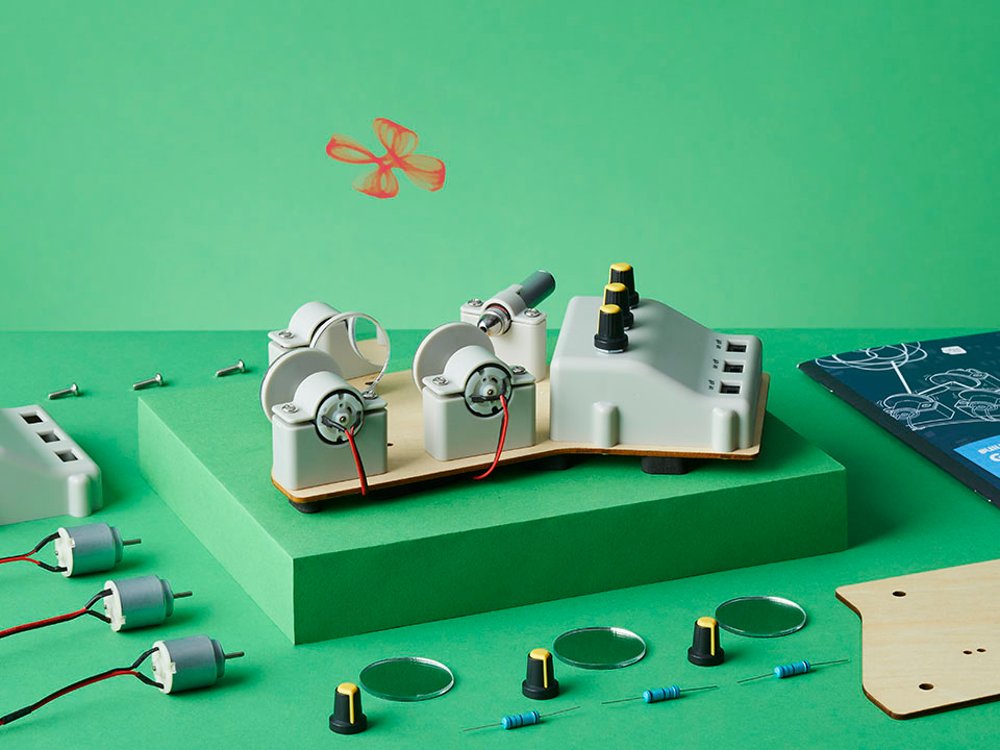
The Geometric Laser Projector enables students to get hands-on with a variable speed laser projector and visualize wave energy.
MS-PS4-2 Waves and their Applications in Technologies for Information Transfer
Develop and use a model to describe that waves are reflected, absorbed, or transmitted through various materials.
KiwiCo Crate: Geometric Laser Projector
Students will measure how various materials impact the journey of laser waves.
MS-PS4-3 Waves and their Applications in Technologies for Information Transfer
Integrate qualitative scientific and technical information to support the claim that digitized signals are a more reliable way to encode and transmit information than analog signals.
MS-LS1-1 From Molecules to Organisms: Structures and Processes
Conduct an investigation to provide evidence that living things are made of cells; either one cell or many different numbers and types of cells.
MS-LS1-2 From Molecules to Organisms: Structures and Processes
Develop and use a model to describe the function of a cell as a whole and ways parts of cells contribute to the function.
MS-LS1-3 From Molecules to Organisms: Structures and Processes
Use argument supported by evidence for how the body is a system of interacting subsystems composed of groups of cells.
MS-LS1-4 From Molecules to Organisms: Structures and Processes
Use argument based on empirical evidence and scientific reasoning to support an explanation for how characteristic animal behaviors and specialized plant structures affect the probability of successful reproduction of animals and plants respectively.
MS-LS1-5 From Molecules to Organisms: Structures and Processes
Construct a scientific explanation based on evidence for how environmental and genetic factors influence the growth of organisms.
MS-LS1-6 From Molecules to Organisms: Structures and Processes
Construct a scientific explanation based on evidence for the role of photosynthesis in the cycling of matter and flow of energy into and out of organisms.
MS-LS1-7 From Molecules to Organisms: Structures and Processes
Develop a model to describe how food is rearranged through chemical reactions forming new molecules that support growth and/or release energy as this matter moves through an organism.
MS-LS1-8 From Molecules to Organisms: Structures and Processes
Gather and synthesize information that sensory receptors respond to stimuli by sending messages to the brain for immediate behavior or storage as memories.
MS-LS2-1 Ecosystems: Interactions, Energy, and Dynamics
Analyze and interpret data to provide evidence for the effects of resource availability on organisms and populations of organisms in an ecosystem.
MS-LS2-2 Ecosystems: Interactions, Energy, and Dynamics
Construct an explanation that predicts patterns of interactions among organisms across multiple ecosystems.
MS-LS2-3 Ecosystems: Interactions, Energy, and Dynamics
Develop a model to describe the cycling of matter and flow of energy among living and nonliving parts of an ecosystem.
KiwiCo Crate: Kitchen Scrap Planter
Students will create a planter and use nonliving matter as a source of energy for living plants.
MS-LS2-4 Ecosystems: Interactions, Energy, and Dynamics
Construct an argument supported by empirical evidence that changes to physical or biological components of an ecosystem affect populations.
MS-LS2-5 Ecosystems: Interactions, Energy, and Dynamics
Evaluate competing design solutions for maintaining biodiversity and ecosystem services.
MS-LS3-1 Heredity: Inheritance and Variation of Traits
Develop and use a model to describe why structural changes to genes (mutations) located on chromosomes may affect proteins and may result in harmful, beneficial, or neutral effects to the structure and function of the organism.
MS-LS3-2 Heredity: Inheritance and Variation of Traits
Develop and use a model to describe why asexual reproduction results in offspring with identical genetic information and sexual reproduction results in offspring with genetic variation.
MS-LS4-1 Biological Evolution: Unity and Diversity
Analyze and interpret data for patterns in the fossil record that document the existence, diversity, extinction, and change of life forms throughout the history of life on Earth under the assumption that natural laws operate today as in the past.
MS-LS4-2 Biological Evolution: Unity and Diversity
Apply scientific ideas to construct an explanation for the anatomical similarities and differences among modern organisms and between modern and fossil organisms to infer evolutionary relationships.
MS-LS4-3 Biological Evolution: Unity and Diversity
Analyze displays of pictorial data to compare patterns of similarities in the embryological development across multiple species to identify relationships not evident in the fully formed anatomy.
MS-LS4-4 Biological Evolution: Unity and Diversity
Construct an explanation based on evidence that describes how genetic variations of traits in a population increase some individuals’ probability of surviving and reproducing in a specific environment.
MS-LS4-5 Biological Evolution: Unity and Diversity
Gather and synthesize information about the technologies that have changed the way humans influence the inheritance of desired traits in organisms.
MS-LS4-6 Biological Evolution: Unity and Diversity
Use mathematical representations to support explanations of how natural selection may lead to increases and decreases of specific traits in populations over time.
MS-ESS1-1 Earth's Place in the Universe
Develop and use a model of the Earth-sun-moon system to describe the cyclic patterns of lunar phases, eclipses of the sun and moon, and seasons.
MS-ESS1-2 Earth's Place in the Universe
Develop and use a model to describe the role of gravity in the motions within galaxies and the solar system.
MS-ESS1-3 Earth's Place in the Universe
Analyze and interpret data to determine scale properties of objects in the solar system.
MS-ESS1-4 Earth's Place in the Universe
Construct a scientific explanation based on evidence from rock strata for how the geologic time scale is used to organize Earth's 4.6-billion-year-old history.
MS-ESS2-1 Earth's Systems
Develop a model to describe the cycling of Earth's materials and the flow of energy that drives this process.
MS-ESS2-2 Earth's Systems
Construct an explanation based on evidence for how geoscience processes have changed Earth's surface at varying time and spatial scales.
MS-ESS2-3 Earth's Systems
Analyze and interpret data on the distribution of fossils and rocks, continental shapes, and seafloor structures to provide evidence of the past plate motions.
MS-ESS2-4 Earth's Systems
Develop a model to describe the cycling of water through Earth's systems driven by energy from the sun and the force of gravity.
MS-ESS2-5 Earth's Systems
Collect data to provide evidence for how the motions and complex interactions of air masses results in changes in weather conditions.
MS-ESS2-6 Earth's Systems
Develop and use a model to describe how unequal heating and rotation of the Earth cause patterns of atmospheric and oceanic circulation that determine regional climates.
MS-ESS3-1 Earth and Human Activity
Construct a scientific explanation based on evidence for how the uneven distributions of Earth's mineral, energy, and groundwater resources are the result of past and current geoscience processes.
MS-ESS3-2 Earth and Human Activity
Analyze and interpret data on natural hazards to forecast future catastrophic events and inform the development of technologies to mitigate their effects.
MS-ESS3-3 Earth and Human Activity
Apply scientific principles to design a method for monitoring and minimizing a human impact on the environment.
MS-ESS3-4 Earth and Human Activity
Construct an argument supported by evidence for how increases in human population and per-capita consumption of natural resources impact Earth's systems.
MS-ESS3-5 Earth and Human Activity
Ask questions to clarify evidence of the factors that have caused the rise in global temperatures over the past century.
MS-ETS1-1 Engineering Design
Define the criteria and constraints of a design problem with sufficient precision to ensure a successful solution, taking into account relevant scientific principles and potential impacts on people and the natural environment that may limit possible solutions.
KiwiCo Crate: Rubber Band Car
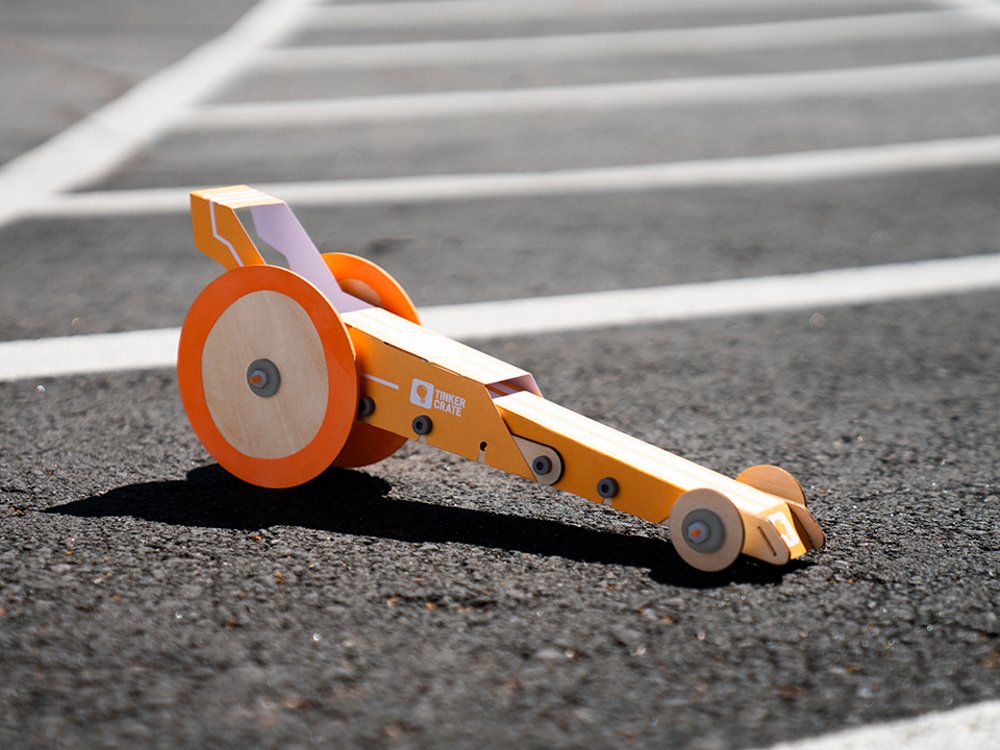
Students will design a Rubber Band Car and use scientific principles to navigate a course and solve for optimal strength, speed, and distance.
MS-ETS1-2 Engineering Design
Evaluate competing design solutions using a systematic process to determine how well they meet the criteria and constraints of the problem.
KiwiCo Crate: Rubber Band Car
Students will compare different Rubber Band Car designs to determine how they can better meet criteria for strength, speed, and distance.
MS-ETS1-3 Engineering Design
Analyze data from tests to determine similarities and differences among several design solutions to identify the best characteristics of each that can be combined into a new solution to better meet the criteria for success.
KiwiCo Crate: Bottle Rocket
Make modifications to the bottle rocket to improve upon the design and achieve different results.
MS-ETS1-4 Engineering Design
Develop a model to generate data for iterative testing and modification of a proposed object, tool, or process such that an optimal design can be achieved.
KiwiCo Crate: Rubber Band Car
Students can experiment with Rubber Band Car designs, measure speed, and create an optimal design.
